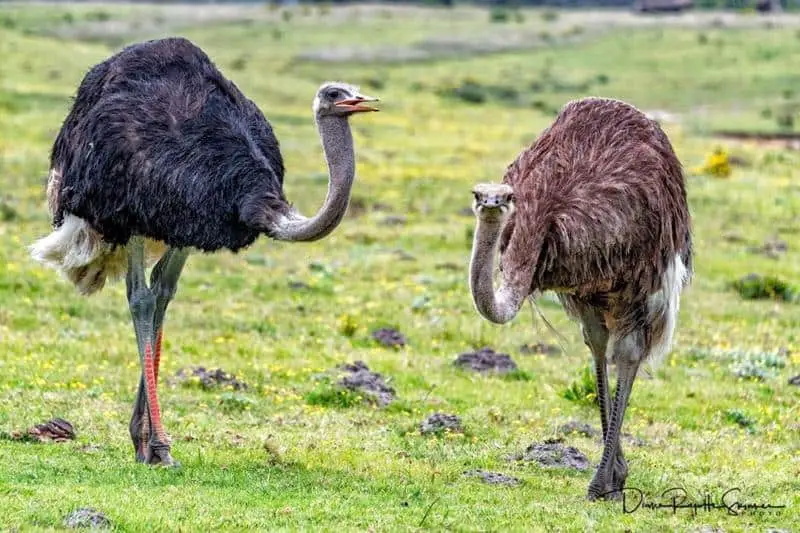Every living organism on Earth is categorized into various groups based on their characteristics and evolutionary lineage. This intriguing field of study is known as taxonomy, enabling scientists to assign names to different species and comprehend their relationships.
Birds and mammals are not the same, despite both being chordates within the Animalia kingdom. Birds are part of their unique class called Aves, while mammals belong to the class Mammalia. Birds have evolved from a group of dinosaurs called theropods, around 150 million years ago. This emergence occurred somewhat later compared to mammals, which originated more than 200 million years ago.
The evolutionary paths of birds and mammals can be visualized using a cladogram, a type of family tree representing the diversity of life forms. While birds and mammals are on distinct branches, they do share common ancestors if traced far back in time.
The passage of time and countless generations have led to significant differences between modern birds and mammals and their long-extinct ancestors. This taxonomic distinction emphasizes that no bird can be classified as a mammal, and vice versa.
Although contemporary birds and mammals exhibit numerous differences, they also share many similarities. As we delve into the distinctions that set mammals apart from our feathered counterparts, it becomes clear that both groups have both distinct characteristics and shared features.
Birds and mammals exhibit a range of differences, some of which are immediately noticeable, while others require closer examination of their behaviors and physical traits. These differences extend to their skeletal and organ structures as well. Below are some key ways in which birds differ from mammals
Physical Differences:
Wings:
One of the most apparent distinctions between birds and mammals lies in their wings. All birds possess wings, even flightless species like ostriches and penguins. Bird wings are adapted forelimbs with fused hand bones. In contrast, the only mammals with wings are bats. While certain mammals, such as flying squirrels, can glide using membranes between their limbs, true wings are a unique characteristic of birds.
Bills/Beaks:
Birds are easily distinguishable by their beaks, which are keratinized structures devoid of teeth, unlike the toothed jaws of mammals. The diversity of bird bills is remarkable, ranging from the conical bill of the common redpoll to the colorful and oversized bill of the toucan. Birds use their bills for various tasks beyond eating, including self-cleaning, fish spearing, hole digging, and vocalization. Mammals lack bills, with the exception of the duck-billed platypus from Australia, which has a soft, duck-like bill and no teeth.
Feathers:
Feathers are a distinctive feature unique to birds among living animals. These structures serve purposes like insulation and flight. There are different types of feathers found on different parts of a bird’s body, broadly categorized as vaned feathers and down feathers. In contrast, mammals are characterized by fur or hair rather than feathers. Fur provides insulation and protection and is present on mammals at various stages of their lives.
These physical distinctions highlight the diversity and specialization of birds and mammals, each adapted to their respective ways of life and ecological roles.
Certainly, there are several other anatomical, locomotive, and reproductive differences between birds and mammals that contribute to their distinctiveness. Here are some more ways in which birds differ from mammals:
Anatomical Differences:
Hollow Bones:
Birds have hollow bones that contribute to their lightweight structure, aiding in flight. In contrast, mammal bones are solid and generally denser.
Scaled Legs:
Many birds have scaled legs, while mammals do not typically possess scales on their limbs.
Syrinx:
Birds have a vocal organ called the syrinx located in their trachea, which allows for a wide range of complex vocalizations. Mammals use vocal cords located in the larynx for sound production.
Air Sacs:
Birds have air sacs that connect to their lungs, allowing for efficient one-way airflow and enabling continuous oxygen exchange during both inhalation and exhalation. Mammals have a diaphragm that aids in lung expansion and contraction.
Gizzard:
Birds possess a muscular organ called the gizzard that aids in grinding and breaking down food. Mammals lack a gizzard.
Wishbone:
Birds have a wishbone, also known as the furcula, which is formed by the fusion of collarbone bones. Mammals lack a wishbone.
Cloaca:
Birds have a cloaca, a single opening for excretion and reproduction. While some mammals also have a cloaca during early development, most mammals have separate openings for these functions.
Locomotion Differences:
Flying and Bipedalism:
Most birds are capable of flight and are bipedal, walking on two legs. Some birds can also swim using their legs or wings for propulsion. Mammals exhibit diverse forms of locomotion, with most being quadrupedal (walking on four legs), though they lack the ability to fly.
Reproductive Differences:
Egg Laying vs. Live Birth:
Birds lay eggs as part of their reproductive strategy, while mammals give birth to live young. Bird eggs are laid early in the development process, allowing for parental assistance in incubation. In mammals, the offspring develop within the mother’s womb until they are ready for birth.
Parental Care:
Parental care varies among different bird species, with some males playing active roles in incubation and chick-rearing. In mammals, male involvement in parenting varies, and many mammals do not provide substantial care for their offspring.
These differences highlight the incredible diversity and adaptations within the avian and mammalian classes, each tailored to their specific ecological roles and evolutionary paths.
What defines a mammal?
Mammals are a group of warm-blooded vertebrates characterized by several key features. One distinctive trait of mammals is their possession of hair or fur covering their bodies. However, the most notable and unique characteristic is their ability to produce milk through mammary glands to nourish their offspring, a feature not found in any other animal group.
Mammalian brains are distinguished by the presence of the neocortex, a part of the brain involved in complex cognitive functions. Additionally, mammals have ossicles, a set of three tiny bones in the middle ear crucial for the sense of hearing.
Commonalities between Birds and Mammals:
Birds and mammals share numerous similarities despite their differences. Both are highly diverse and successful groups that inhabit various environments around the world. They are considered the most intelligent classes in the animal kingdom and possess the ability to regulate their body temperatures using metabolic processes. While they have comparable organ systems, distinct variations exist in terms of reproductive and gastrointestinal tracts. Both birds and mammals exhibit extensive parental care, a rarity in the animal kingdom.
Birds as Mammals:
Technically, birds and mammals are fundamentally distinct categories of animals with their last common ancestor estimated to have lived over 300 million years ago. While there are no birds that can be classified as mammals, the kiwi bird from New Zealand has earned the nickname “honorary mammal” due to its unique characteristics. Kiwis are flightless and forage on the forest floor, resembling fur-bearing mammals in some aspects.
Birds and Milk:
Birds do not possess mammary glands and thus do not produce milk as mammals do. However, birds engage in advanced parental care, similar to mammals. Some birds, like pigeons and doves, produce a substance called “crop milk,” which is a high-protein fluid fed to their chicks for the initial weeks of life. While not true milk, it serves a similar purpose in nourishing the young. In contrast, mammals feed their offspring by nursing from mammary glands. Both male and female birds contribute to chick feeding, while in mammals, only the mother produces milk.
Final Thoughts on Are Birds Mammels?
Are birds classified as mammals? No, even though they exhibit several resemblances that could lead to questions about their close relationship. While they do share common ancestors, the last ancestor they had in common became extinct almost 300 million years ago.
Although their evolutionary histories diverged, birds and mammals have developed numerous comparable features. Some bird species have developed traits reminiscent of mammals, and certain mammals have evolved in ways that make them more bird-like. As a result, a handful of species pose classification challenges.
Nonetheless, by examining the distinctive attributes that set birds and mammals apart, it’s possible to ascertain the appropriate classification for any given species.
Frequently Asked Questions (FAQs)
Are chickens mammals?
No, chickens are not mammals. Chickens belong to the bird family Phasianidae. Despite their common domestication and appearance, they are more closely related to other bird species than mammals.
Are penguins mammals or birds?
Penguins are birds. Although their physical adaptations for swimming and survival in cold environments may make them appear different from typical songbirds, they still belong to the bird group. Like all birds, penguins share a common ancestry with other avian species.
Do mammals lay eggs?
Most mammals give birth to live young, but there are exceptions. While the majority of mammals do not lay eggs, there are a few extraordinary cases among Australian species. The duck-billed platypus and the four echidna species are unique mammals that lay eggs. These animals are known as monotremes, a group that retains some reptilian characteristics in addition to mammalian traits.






